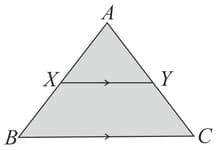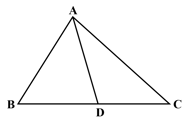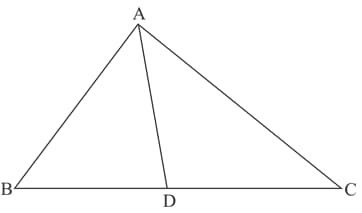Angle Bisector Theorem
Angle Bisector Theorem: Overview
This topic covers concepts such as Angle Bisector Theorem and Areas of Similar Triangles.
Important Questions on Angle Bisector Theorem
In a triangle and are points on the segments and respectively such that and If the area of triangle is then what is the area of triangle
Areas of two similar triangles are and . If the length of a side of the larger triangle is , then the length of the corresponding side of the smaller triangle is
Diagonals of a trapezium intersect each other at the point . If , then the ratio of areas of triangles is
The sides of two similar triangles are in the ratio , then their areas are in the ratio:
In and . If the area of , find the area of the trapezium (in ).

Let be an acute-angled triangle in which . From the vertex draw the altitude the angle bisector and the median , with lying on . Then,
Let be the side-length of a triangle and be the lengths of its medians. Put Then, as vary, can assume every value in the interval
In a triangle is the altitude from on to . Draw perpendicular to and perpendicular to . Suppose and Then the length of is
If in which . The ratio of the areas of is
If the ratio of the heights of two similar triangles is , find the ratio of the areas.
In , is the bisector of , also , find the length of .
Note: This question given in the book seems to have errors and the modified question should be as below.
In , is the bisector of , also , find the length of in .Perpendiculars and are drawn to two ends of a line segment . If and are at the opposite sides of and their joining line intersects at . Also , find the in .
In a , if point is on the side such that and . Find .
Given , and , then area of area of will be:
In a trapezium and its diagonals intersects each other at . If , the ratio of the areas and is:
The areas of two triangles are and respectively. If a median of smaller triangle is , the corresponding median of larger triangle is:
In figure, if , then the measure of is:

(Note: is the angle bisector of ).
In the figure, is the bisector of , if , then the length of will be:

